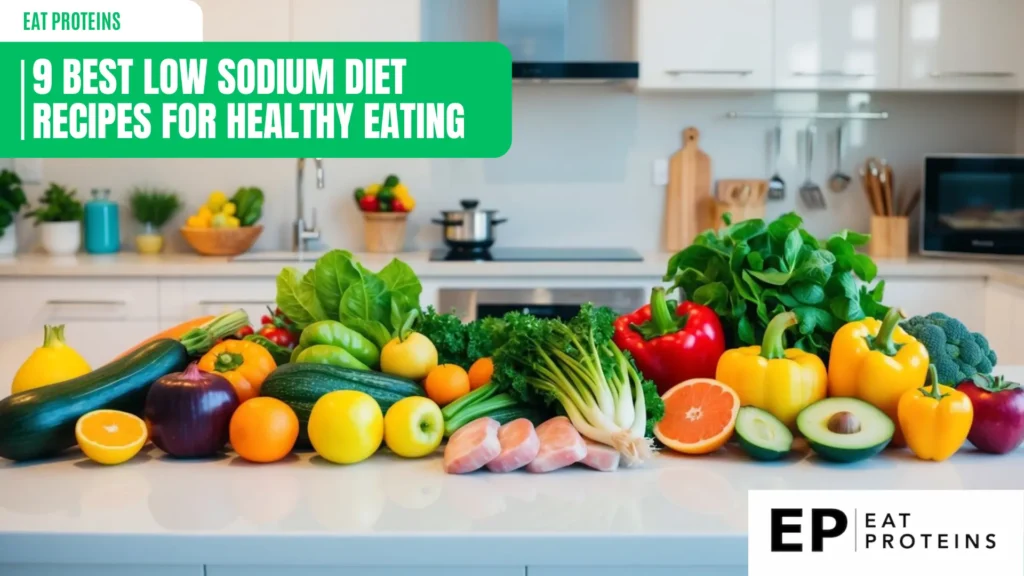
Eating a low sodium diet can greatly improve overall health, especially for those dealing with high blood pressure or heart disease. I want to share some delicious and easy recipes that will help you enjoy your meals while keeping sodium levels in check. These recipes focus on flavor without relying heavily on salt, making it simpler to transition to a healthier eating style.
In this article, I will provide nine of my favorite low sodium recipes that are both nutritious and satisfying. Each recipe is designed to show that you don’t have to sacrifice taste for health. With the right ingredients, cooking low sodium can be a delightful experience.
1. Grilled Lemon Herb Chicken
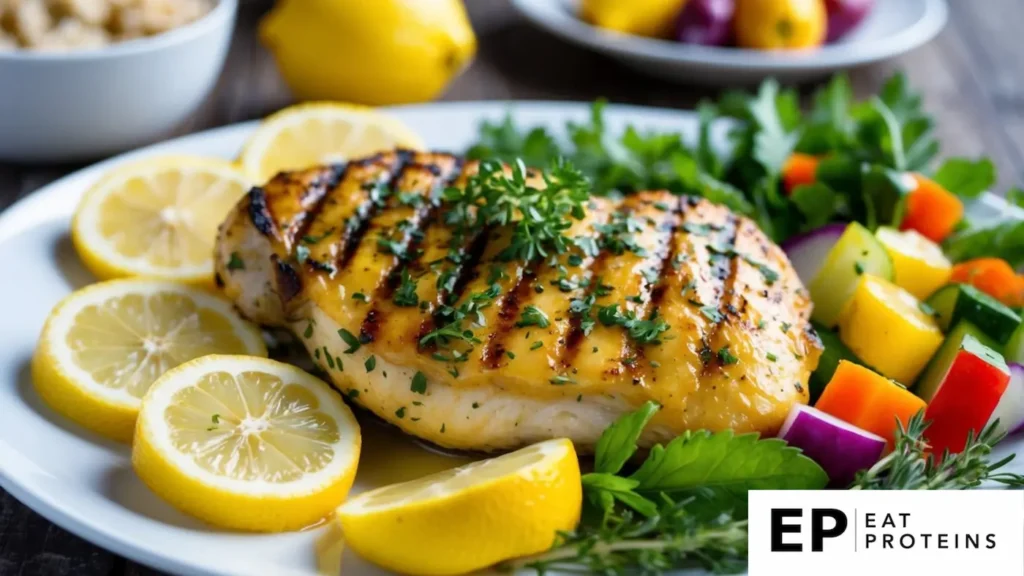
Grilled Lemon Herb Chicken is a healthy dish that is simple to make and full of flavor. This recipe uses fresh herbs and lemon juice, creating a delicious low-sodium option for any meal.
To prepare, I gather the following ingredients: chicken breasts, lemon juice, olive oil, garlic, and herbs like rosemary and thyme. This dish takes about 30 minutes from start to finish.
Here are the steps I follow:
- Marinate the Chicken: In a bowl, I mix ¼ cup of lemon juice, 2 tablespoons of olive oil, minced garlic, and a teaspoon each of rosemary and thyme. I coat the chicken in this mixture and let it marinate for at least 15 minutes.
- Preheat the Grill: While the chicken marinates, I preheat my grill to medium-high heat.
- Grill the Chicken: I place the chicken on the grill and cook for about 6-7 minutes on each side, or until the internal temperature reaches 165°F.
- Serve: After grilling, I let the chicken rest for a few minutes before serving.
This Grilled Lemon Herb Chicken is a flavorful and simple recipe that fits perfectly into a low-sodium diet. Enjoy!
2. Quinoa Salad with Apple and Cranberries
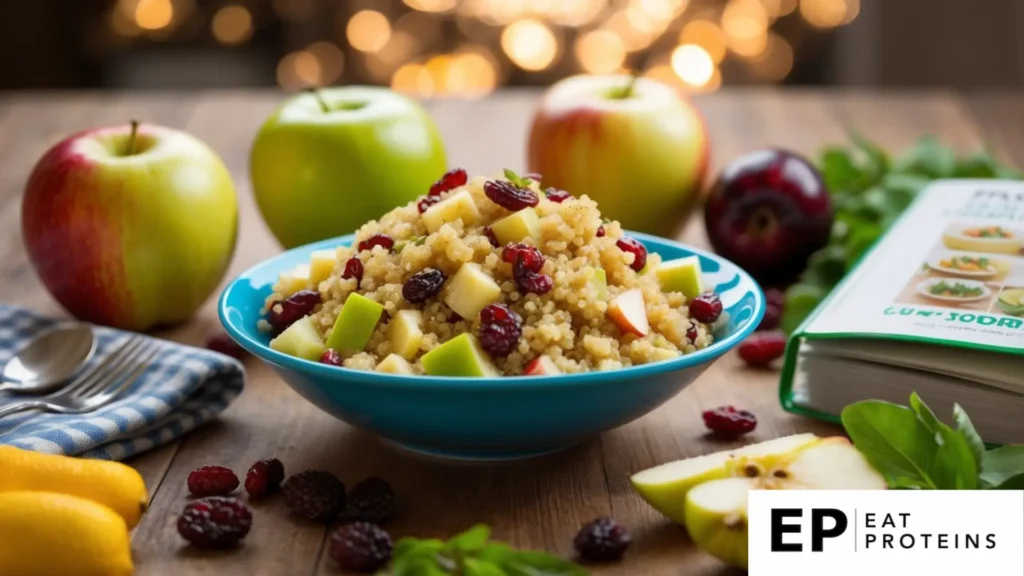
Quinoa salad with apple and cranberries is a refreshing and nutritious dish. Quinoa is a gluten-free grain that is high in protein and fiber. This makes it a great base for a low sodium diet.
Making this salad is easy and quick. I can prepare it in about 20 minutes.
Here are the steps I follow:
- Cook the Quinoa: Rinse 1 cup of quinoa in water. Combine it with 2 cups of water in a pot and bring it to a boil. Once boiling, reduce the heat and simmer for 15 minutes until the water is absorbed.
- Chop Ingredients: While the quinoa cooks, I chop 1 apple into small pieces and measure out 1/2 cup of dried cranberries.
- Mix Ingredients: Once the quinoa is cooked and cooled, I mix it with the apple and cranberries in a large bowl.
- Add Dressing: I drizzle with a dressing of 2 tablespoons of apple cider vinegar and 1 tablespoon of olive oil. This adds flavor without too much sodium.
- Serve: Finally, I mix everything well and serve it chilled or at room temperature.
This salad is colorful, tasty, and perfect for any meal.
3. Low-Sodium Veggie Stir-Fry
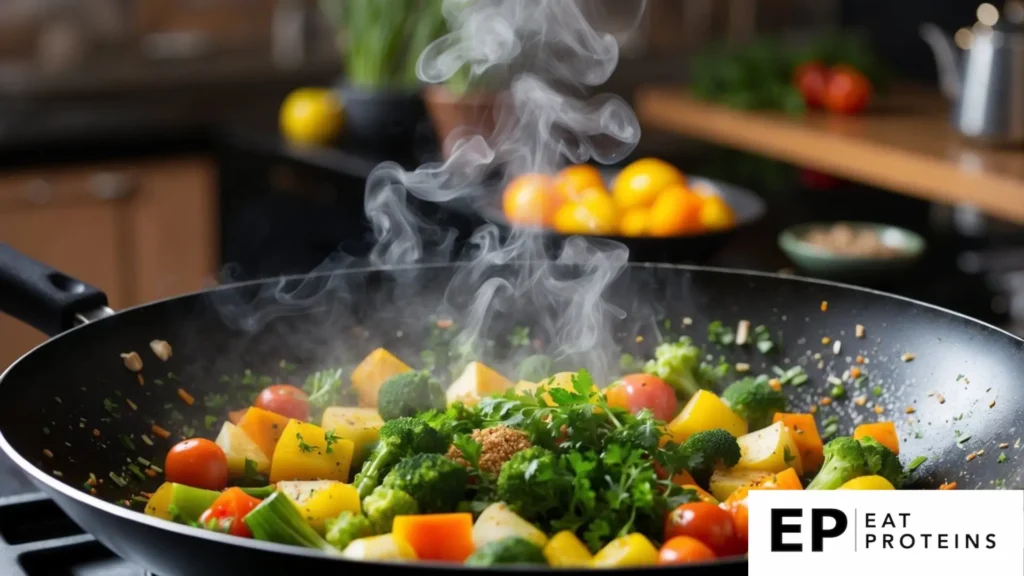
A low-sodium veggie stir-fry is a healthy and colorful dish made with fresh vegetables and a light sauce. It is an easy option for anyone looking to eat healthier without too much sodium.
I enjoy making this dish because it requires just a few ingredients and takes very little time. It’s perfect for a quick weeknight dinner.
To prepare this stir-fry, follow these steps:
- Gather Ingredients: I use a mix of my favorite vegetables, like bell peppers, broccoli, and carrots. I also include tofu or chicken for protein.
- Prep the Vegetables: I chop my vegetables into bite-sized pieces for even cooking.
- Heat a Pan: I heat a non-stick pan over medium heat, allowing it to warm up for about 2 minutes.
- Add Oil: I add a small amount of olive oil or vegetable broth to the pan.
- Stir-Fry: I add my vegetables and protein, cooking for about 5-7 minutes while stirring frequently.
- Flavor: Instead of soy sauce, I use a mix of vinegar and herbs for flavor.
This dish is versatile and can be customized to suit my taste preferences.
4. Baked Salmon with Dill
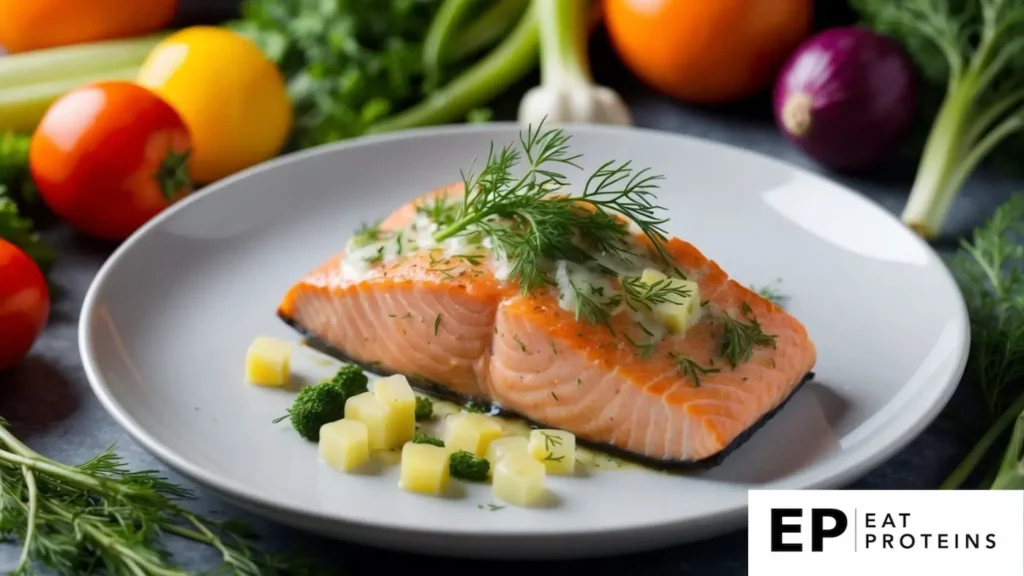
Baked salmon with dill is a healthy dish that fits perfectly into a low sodium diet. Salmon is known for being rich in omega-3 fatty acids, which are good for heart health. Dill adds a fresh flavor without the need for salt.
To make this dish, I find it easy and quick. Here’s how I prepare it:
- Preheat the oven to 375°F (190°C).
- Place a salmon fillet on a baking sheet lined with parchment paper.
- Drizzle with olive oil and sprinkle with fresh dill.
- Add lemon slices on top for extra flavor.
- Bake for 15-20 minutes, or until the salmon is cooked through.
This method keeps the salmon moist and flavorful. I enjoy serving it with steamed vegetables or a light salad. Baked salmon with dill is not only healthy but also a simple way to enjoy a delicious meal that supports my low sodium goals.
5. Garlic Mashed Cauliflower
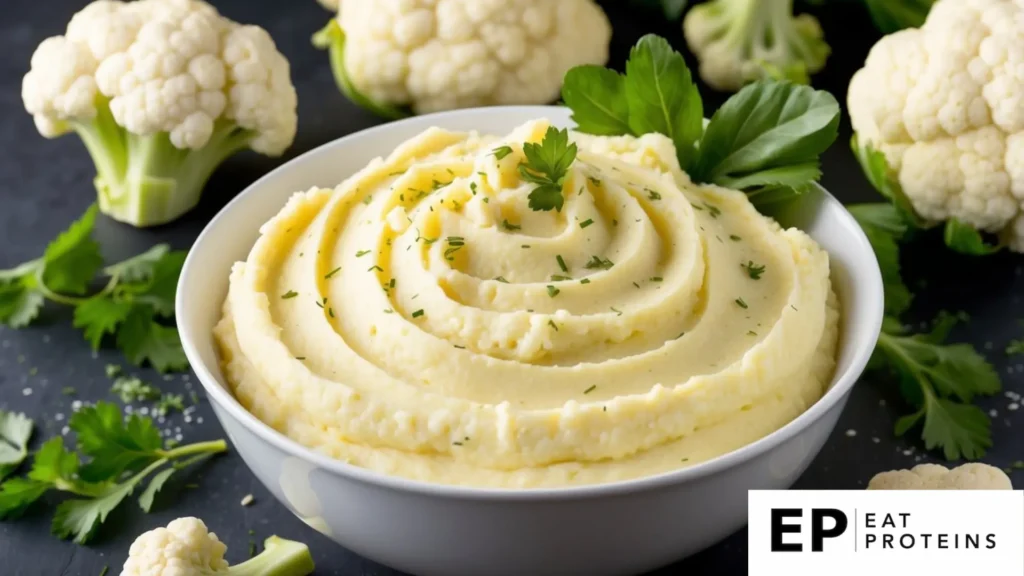
Garlic mashed cauliflower is a tasty and healthy alternative to traditional mashed potatoes. It is low in sodium and packed with flavor. This dish uses cauliflower, garlic, and a splash of almond milk for creaminess.
Making garlic mashed cauliflower is quite simple. First, I steam or boil one head of cauliflower until it is tender. This usually takes about 10-15 minutes.
Next, I sauté three cloves of minced garlic in a pan with a little bit of olive oil until the garlic is fragrant. This takes around 2-3 minutes.
Once the cauliflower is cooked, I drain it and add it to the garlic mixture. Then, I pour in about half a cup of almond milk.
I use a potato masher or an immersion blender to mash everything together until it’s smooth. If needed, I add salt and pepper to taste.
In just 30 minutes, I can enjoy this creamy, flavorful side dish. Garlic mashed cauliflower pairs well with many main courses and is sure to impress anyone at the table.
6. Roasted Red Pepper Soup
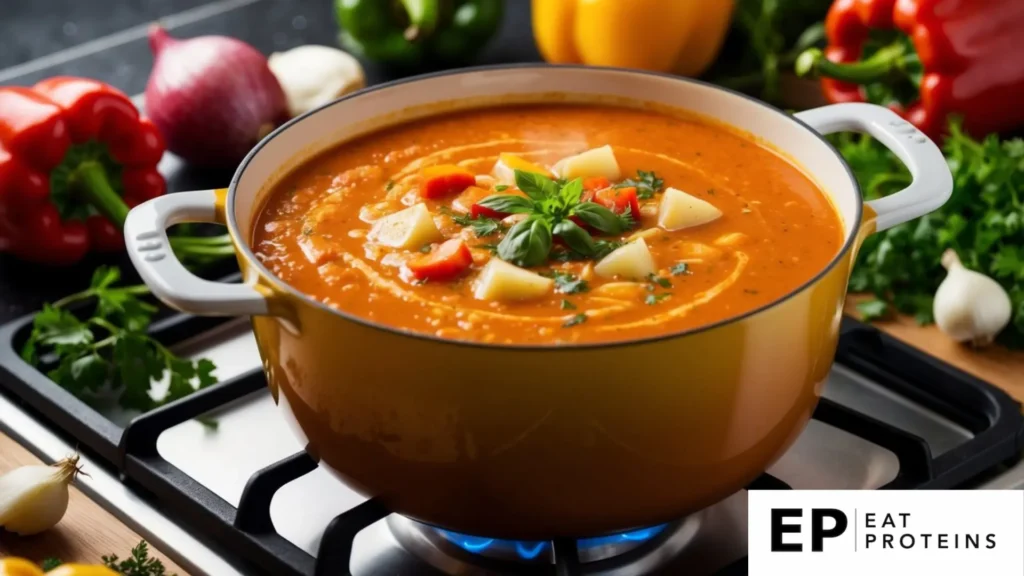
Roasted red pepper soup is a delicious and healthy option for those on a low sodium diet. It is made primarily from roasted red peppers, which provide a rich flavor without added salt.
I find this soup easy to make. The process mainly involves roasting, blending, and heating. Here’s how I prepare it:
- Preheat the oven to 450°F (232°C).
- Cut 4 red bell peppers in half and remove the seeds.
- Place them skin side up on a baking sheet and roast for 20-25 minutes until the skin is charred.
- Once cooled, peel off the skins and chop the peppers.
- In a pot, heat 1 tablespoon of olive oil. Add 1 chopped onion and sauté for 5 minutes.
- Add the roasted peppers, 3 cups of vegetable broth, and 1 teaspoon of minced garlic.
- Simmer for 10 minutes, then blend until smooth.
This soup is creamy and delightful without adding salt. It is perfect as a starter or a light meal.
7. Turkey and Avocado Lettuce Wraps
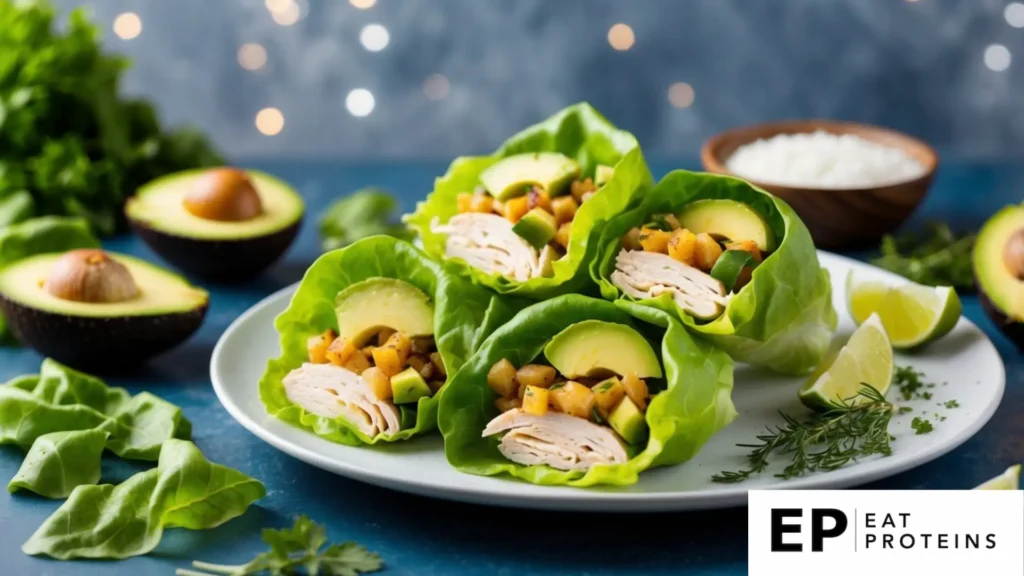
Turkey and avocado lettuce wraps are a tasty low-sodium option. They are simple to make and perfect for a quick meal or snack. Using lettuce as a wrap keeps the dish light and fresh.
To prepare, I gather my ingredients: sliced turkey breast, ripe avocado, lettuce leaves, and some toppings like tomatoes or cucumbers. I wash the lettuce leaves and pat them dry.
Next, I slice the avocado in half, remove the pit, and scoop out the flesh. Then I mash the avocado lightly with a fork and season it with a squeeze of lemon juice for flavor.
I lay out a lettuce leaf and spread some of the mashed avocado on it. I then add slices of turkey on top. If I want, I can add a few slices of cucumber or tomato for extra crunch.
To finish, I fold the lettuce up like a wrap. It’s ready to enjoy right away. These wraps are healthy, satisfying, and delicious without adding sodium.
8. Cucumber and Tomato Salad
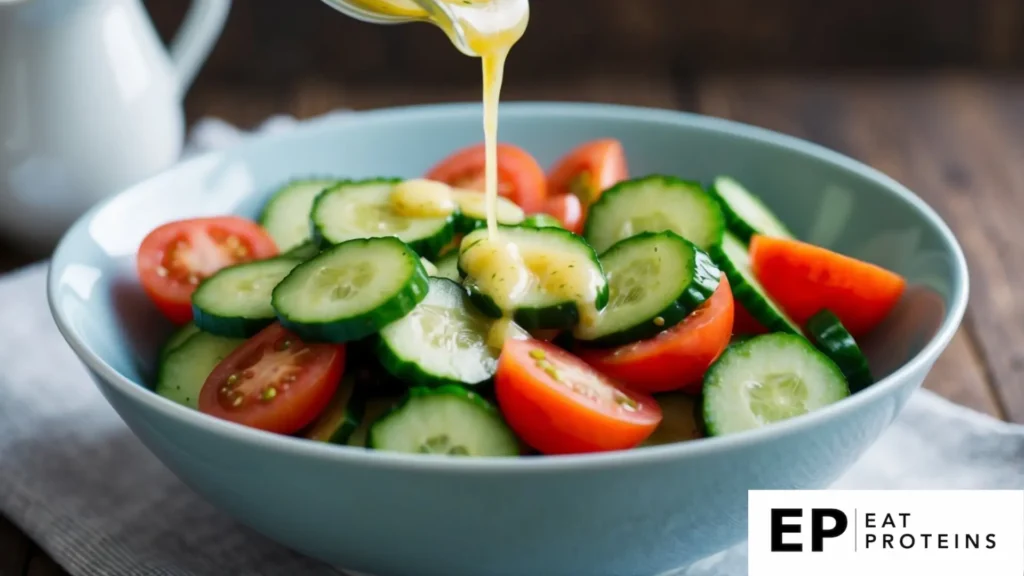
Cucumber and tomato salad is a refreshing and healthy dish. It features fresh vegetables that are low in sodium and full of vitamins. This salad is easy to prepare and takes only a few minutes.
To make this salad, I start with the following ingredients:
- 2 medium cucumbers
- 2 medium tomatoes
- 1 tablespoon olive oil
- 1 tablespoon lemon juice
- Salt and pepper to taste
Here are the simple steps I follow:
- Wash the cucumbers and tomatoes thoroughly.
- Slice the cucumbers and tomatoes into bite-sized pieces.
- In a bowl, combine the vegetables.
- Drizzle olive oil and lemon juice on top.
- Add salt and pepper as desired.
- Toss gently to mix everything.
This dish is perfect as a side or light meal. The crisp cucumbers and juicy tomatoes work well together, making it a delightful choice for anyone on a low sodium diet. Enjoy!
9. Spaghetti Squash with Marinara Sauce
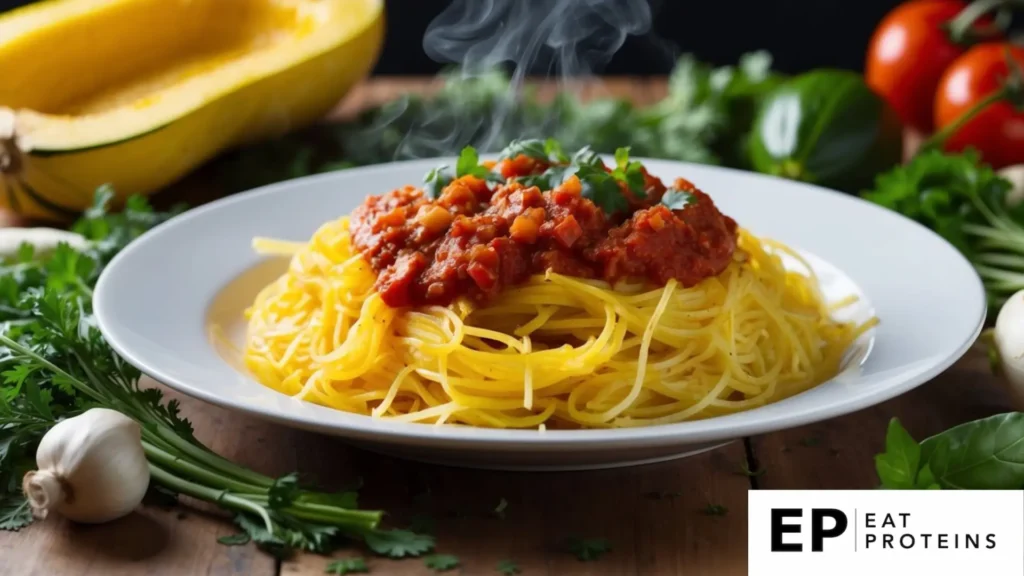
Spaghetti squash is a low-calorie vegetable that serves as a great pasta alternative. It has a mild flavor and a unique texture that resembles spaghetti when cooked. This dish is an excellent choice for a low sodium diet.
Making spaghetti squash is easy. First, I cut the squash in half lengthwise and remove the seeds. Then, I place both halves face down on a baking sheet and roast them at 400°F for about 30–40 minutes.
While the squash cooks, I prepare a simple marinara sauce. In a pot, I heat olive oil, add chopped onions and garlic, and sauté until soft. Next, I add crushed tomatoes and let it simmer for about 15–20 minutes. Adding fresh herbs like basil or oregano enhances the flavor without adding sodium.
Once the squash is done, I scrape out the flesh with a fork to create spaghetti-like strands. I top it with my homemade marinara sauce. This dish tastes great and fits well in a low sodium diet plan. Enjoy!
What Are the Benefits of a Low Sodium Diet?
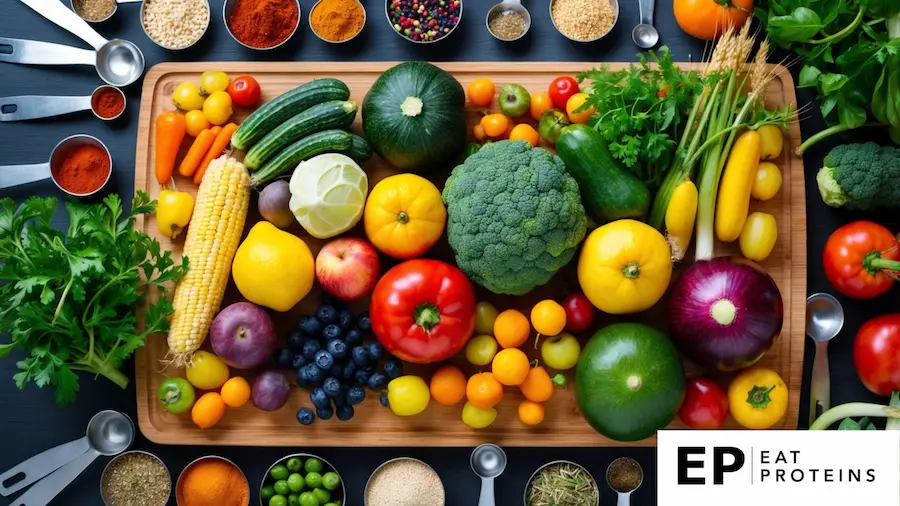
A low sodium diet offers several significant health benefits. I find that reducing sodium intake can lead to improvements in heart health, lower blood pressure, and a reduced risk of stroke. These benefits make it an important consideration for those looking to enhance their overall well-being.
How Does a Low Sodium Diet Improve Heart Health?
One of the main benefits of a low sodium diet is improved heart health. High sodium levels can lead to hypertension, which puts a strain on the cardiovascular system. By lowering sodium intake, I can help my heart work more efficiently.
Research shows that reducing sodium can help decrease the risk of heart disease. This is particularly important for those with existing heart conditions. Eating a diet that focuses on whole foods, such as fruits, vegetables, and lean proteins, further supports cardiovascular health.
How Does a Low Sodium Diet Lower Blood Pressure?
Reducing sodium in my diet can directly lead to lower blood pressure. High blood pressure, or hypertension, is a major risk factor for various health issues, including heart disease and kidney damage. When I limit my sodium intake, I often see a noticeable drop in my blood pressure readings.
Studies suggest that a reduction of even a small amount of sodium can produce significant changes in blood pressure levels. For instance, I can notice positive effects by consuming less than 2,300 mg of sodium daily. Focusing on fresh and unprocessed foods is a practical way to achieve this goal.
What Is the Impact of a Low Sodium Diet on Reducing Stroke Risk?
A low sodium diet contributes to a lower risk of stroke. High sodium intake is linked to hypertension, which increases the chance of stroke. By managing my sodium levels, I can reduce my overall risk.
Evidence indicates that those who follow a low sodium diet may experience fewer strokes compared to those with higher sodium consumption. Maintaining proper hydration and consuming potassium-rich foods can also support this effort. I often incorporate foods like bananas and spinach to help balance my diet.
How Can You Reduce Sodium in Your Diet?
Reducing sodium in my diet can be straightforward with the right strategies. I find that being mindful of nutrition labels, incorporating herbs and spices, and cooking at home are effective ways to manage sodium intake.
What Should You Look for When Reading Nutrition Labels to Reduce Sodium?
When shopping for food, I make it a habit to read nutrition labels carefully. Sodium content can vary greatly between brands and products. I look for options with less than 140 mg of sodium per serving, which is considered low-sodium.
I also pay attention to serving sizes, as a product might seem low in sodium but could be misleading if I eat more than one serving. I often avoid processed foods, as they frequently contain hidden salts.
Familiarizing myself with common terms like “sodium-free” (less than 5 mg) or “very low sodium” (less than 35 mg) helps me make better choices. Keeping this knowledge handy can significantly help me lower my sodium intake.
How Can You Use Herbs and Spices to Reduce Sodium Intake?
Instead of salt, I often turn to herbs and spices to flavor my food. Ingredients like garlic, basil, oregano, and cumin can enhance taste without adding sodium.
I like to create my own herb blends using dried spices. A combination of rosemary, thyme, and black pepper can really transform a dish. I sometimes look for salt-free spice blends at the store to make things easier.
Experimenting with different flavors keeps my meals interesting and satisfying. This approach allows me to enjoy flavorful food while sticking to low-sodium guidelines.
How Does Cooking at Home Help You Lower Sodium in Your Diet?
Cooking at home gives me control over the ingredients I use. When I prepare meals myself, I can find low-sodium alternatives for things like sauces and broths.
I make my own stocks using vegetables and herbs instead of store-bought versions rich in salt. When baking, I often adjust recipes to reduce salt without sacrificing flavor.
Planning meals ahead of time helps me avoid last-minute decisions that might lead to high-sodium choices. By cooking at home, I create healthier meals tailored to my taste and dietary needs.
